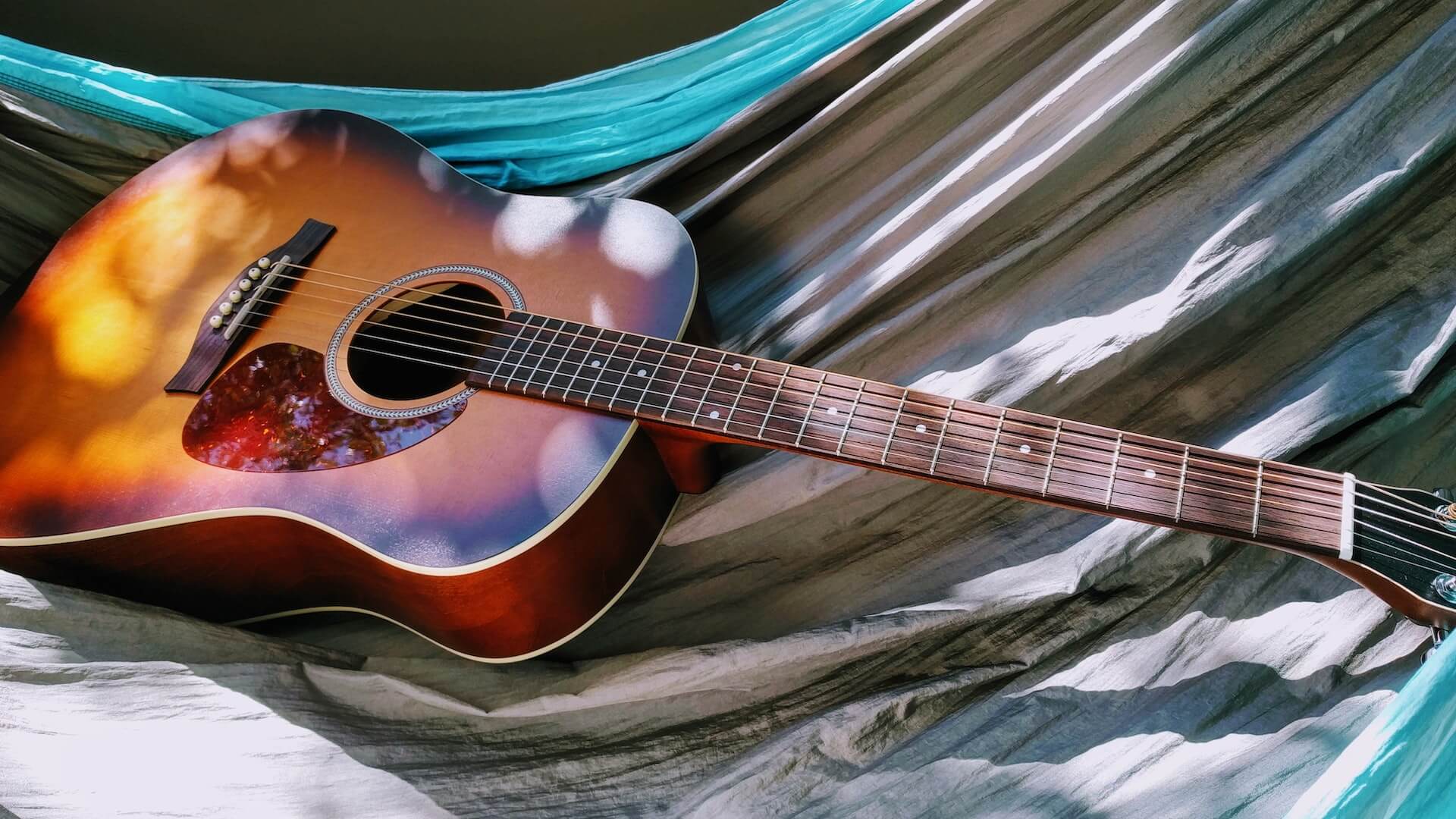Playing the guitar is one of the most popular hobbies in the world. It’s a great way to express yourself, relieve stress, and entertain others. However, mastering the guitar can be a daunting task. With so many chords, scales, and techniques to learn, it’s easy to get overwhelmed. That’s why we’ve created this comprehensive guide to guitar mastery. Whether you’re a complete beginner or an experienced player looking to take your skills to the next level, this guide will provide you with all the tools you need to achieve your guitar-playing goals. We’ll cover everything from the basics of guitar anatomy and tuning to advanced playing techniques and music theory. So grab your guitar and get ready to take your playing to the next level!
Introduction: Why mastering the guitar is a lifelong journey
The allure of the guitar is undeniable. Its melodic strings have the power to captivate hearts, evoke emotions, and transport listeners to another dimension. Whether you’re a novice strummer or a seasoned player, embarking on the journey to master the guitar is an exhilarating and rewarding endeavor.

But let’s be clear – mastering the guitar is not an overnight feat. It’s a lifelong journey that requires dedication, patience, and a deep love for the instrument. The guitar is more than just an instrument; it becomes an extension of your soul, a conduit through which you can express your deepest emotions and connect with others on a profound level.
When you set out on the path to guitar mastery, you’re embarking on a journey of self-discovery. You’ll encounter challenges, frustrations, and moments of self-doubt. But with perseverance and a growth mindset, you’ll also experience breakthroughs, joy, and a sense of accomplishment like no other.
The beauty of mastering the guitar lies not only in the destination but also in the journey itself. It’s about immersing yourself in the intricacies of chords, scales, and techniques. It’s about exploring various genres, from blues and rock to classical and jazz. It’s about experimenting with different playing styles, finding your unique voice, and creating music that resonates with your soul.
As you progress on your guitar journey, you’ll discover that there’s always something new to learn. Even the greatest guitarists in history continue to push their boundaries, constantly seeking new techniques, styles, and inspirations. The guitar is a vast ocean of possibilities, and each dive into its depths uncovers hidden treasures waiting to be explored.
So, whether you’re a beginner just starting to strum your first chords or an experienced player looking to refine your skills, this comprehensive guide to guitar mastery will serve as your trusted companion. It will equip you with the knowledge, techniques, and mindset needed to navigate the twists and turns of this lifelong journey.
Choosing the right guitar: Understanding the different types and finding your perfect match
With so many different types of guitars available, it’s important to understand the differences between them and find the one that suits you best.
First, let’s discuss the most popular types of guitars. Acoustic guitars are known for their warm and natural sound. They are great for playing folk, country, and singer-songwriter genres. On the other hand, electric guitars produce a wide range of tones and are perfect for rock, blues, and jazz. They require an amplifier to be heard properly.
If you’re a beginner, you might consider starting with a classical guitar. They have nylon strings that are easier on the fingers and produce a mellow sound. Classical guitars are ideal for playing classical music and fingerstyle techniques. On the other hand, if you’re more inclined towards playing rock or metal, an electric guitar would be a better choice.
Next, consider the body shape of the guitar. The most common shapes are dreadnought, concert, and jumbo for acoustic guitars, and solid-body, semi-hollow, and hollow-body for electric guitars. Each shape has its own unique sound and playing experience. It’s important to try out different shapes to see which one feels the most comfortable for you.
Furthermore, pay attention to the neck profile and width. The neck should feel comfortable in your hands and allow for easy movement across the fretboard. Some guitars have wider necks, which can be beneficial for fingerstyle playing, while others have slimmer necks that are great for faster lead playing.
Lastly, don’t forget about your personal preferences. Consider the aesthetics of the guitar, such as the finish, color, and overall design. You’ll be more motivated to practice and play if you love the look of your instrument.
Learning the basics: Essential techniques and exercises for beginners
Learning the basics is crucial for any aspiring guitarist. These fundamental techniques and exercises lay the foundation for your journey towards guitar mastery. Whether you’re a complete beginner or have some experience, dedicating time to these essential skills will set you on the right path.

First and foremost, mastering proper hand positioning is essential. Correctly placing your fingers on the fretboard and maintaining a relaxed yet firm grip is crucial for producing clean and accurate notes. Spend time practicing basic chords, focusing on pressing down each string firmly and ensuring that no strings are muted or buzzing.
Another vital technique is strumming. Learning different strumming patterns and rhythms will enhance your ability to play various styles of music. Start with simple downstrokes and gradually incorporate upstrokes to develop a smooth and consistent strumming motion. Practice strumming along with songs or a metronome to improve your timing and rhythm.
Fingerpicking is another technique that every guitarist should explore. This technique involves plucking the strings with your fingers instead of using a pick. Begin with basic fingerpicking patterns, using your thumb for the bass notes and your other fingers for the higher strings. As you progress, experiment with more intricate patterns and melodies.
In addition to technique, it’s important to develop strength and dexterity in your fretting hand. Regularly practicing finger exercises, such as chromatic scales or finger stretches, will improve your finger independence and agility. Start slowly and gradually increase your speed as you become more comfortable.
Remember, consistency is key when learning the basics. Set aside dedicated practice time each day, even if it’s just a few minutes, to work on these foundational techniques. Over time, you’ll notice significant progress and gain confidence in your playing abilities.
Understanding guitar theory: The foundations of scales, chords, and progressions
Scales are the backbone of melody and soloing on the guitar. They provide a framework for creating beautiful melodies and improvisations. By learning the different scales and their patterns, you gain the ability to navigate the fretboard with ease and freedom. Whether it’s the pentatonic scale for blues or the major scale for more melodic styles, mastering scales opens up a world of musical possibilities.
Chords, on the other hand, are the building blocks of harmony. They are formed by combining different notes and create the rich soundscapes we hear in music. Understanding chord construction, voicings, and progressions allows you to play rhythmically and accompany other musicians or even write your own songs. From simple open chords to complex jazz voicings, the possibilities are endless.
Progressions refer to the sequence of chords in a song. They create the harmonic structure and give music its emotional impact. By understanding how progressions work and their relationship to scales, you can analyze songs, play them by ear, and even create your own unique progressions. This knowledge empowers you to express yourself and communicate through your guitar playing.
Developing finger dexterity and coordination: Exercises to improve your technique
Just like any other instrument, the guitar requires dedicated practice and specific exercises to improve your technique.

One effective exercise is practicing scales. Start with the basic major and minor scales and gradually move on to more complex ones. Practice them slowly and accurately, focusing on each note and making sure your fingers are properly placed on the frets. As you become more comfortable, gradually increase the speed, making sure to maintain accuracy and clarity.
Another exercise that can greatly improve your finger dexterity is playing arpeggios. Arpeggios are broken chords played one note at a time. They help train your fingers to move independently and swiftly across the fretboard. Start with simple arpeggios, such as the ones in major and minor chords, and gradually progress to more intricate patterns.
To further challenge yourself, incorporate fingerpicking exercises into your practice routine. Fingerpicking involves plucking the strings with your fingers individually or in various patterns. This technique enhances coordination and control over each finger, allowing you to play intricate melodies and complex chord progressions.
In addition to these exercises, it is also beneficial to incorporate specific finger-strengthening exercises into your practice routine. Utilize tools like hand grip strengtheners or finger exercisers to improve the strength and flexibility of your fingers. These exercises will enhance your ability to apply the necessary pressure on the strings and execute techniques with ease.
Mastering different playing styles: From strumming to fingerpicking and beyond
From strumming to fingerpicking and beyond, there are various techniques and styles that you can explore to expand your musical horizons.
Strumming is perhaps one of the first techniques that beginners learn. It involves using a pick or your fingers to brush across the strings, creating a rhythmic and percussive sound. Mastering strumming patterns and understanding different rhythms can help you add depth and texture to your playing, whether you’re strumming along to a folk song or rocking out to a power chord progression.
On the other hand, fingerpicking is a technique that requires more dexterity and precision. Instead of using a pick, you use your fingers to pluck individual strings, creating intricate melodies and harmonies. Fingerpicking allows for greater control and expression, and it’s commonly used in genres like classical, folk, and blues.
But the world of guitar playing styles doesn’t stop there. You can explore techniques like palm muting, bending, sliding, hammer-ons, pull-offs, and many more. Each technique adds a unique flavor to your playing, allowing you to create different moods and tones.
To master these different playing styles, it’s essential to practice regularly and with patience. Start by learning the basics of each technique and gradually incorporate them into your playing. Experiment with different rhythms, tempos, and patterns to develop your own signature style.
Additionally, listening to guitarists who excel in these styles can provide inspiration and insight. Study the techniques of guitar legends like Jimi Hendrix, Eric Clapton, and Tommy Emmanuel to understand how they incorporate various playing styles into their music.
Expanding your musical vocabulary: Learning and incorporating new chords and scales
While it’s important to have a solid foundation of basic chords and scales, continually learning and incorporating new ones will open up a world of possibilities in your playing.

One way to expand your chord knowledge is by learning different voicings and variations of chords you already know. For example, if you’re comfortable playing a basic open C major chord, try experimenting with different inversions or adding embellishments like sus2 or sus4 to create a unique sound. You can also explore more complex chords like jazz voicings or extended chords to add richness and depth to your playing.
In addition to chords, learning new scales is essential for enhancing your improvisation skills and creating memorable guitar solos. Start by mastering the major and minor scales, and then gradually delve into exotic scales like the harmonic minor, pentatonic, or blues scales. Each scale has its own unique flavor and can add a fresh dimension to your compositions or improvisations.
Not only will learning new chords and scales expand your musical vocabulary, but it will also improve your overall understanding of music theory. As you explore different chord progressions and scale patterns, you’ll start to recognize common patterns and relationships, allowing you to navigate the fretboard more confidently and effortlessly.
To incorporate new chords and scales into your playing, practice them in the context of songs or musical exercises. Choose songs that utilize the chords or scales you’re learning, and gradually integrate them into your repertoire. This hands-on approach will help you internalize the new concepts and make them a natural part of your playing.
Developing a practice routine: Tips for effective and efficient practicing
Without a structured approach to your practice sessions, progress can be slow and discouraging. Here are some tips to help you create a practice routine that will maximize your results:
1. Set specific goals:
Before each practice session, determine what you want to achieve. It could be learning a new chord progression, improving your speed and accuracy, or mastering a challenging solo. Setting goals will give your practice sessions focus and direction.
2. Break it down:
Instead of trying to tackle a whole song or technique in one go, break it down into smaller, manageable parts. Focus on mastering one section at a time before moving on to the next. This will help you build a strong foundation and prevent overwhelm.
3. Time management:
Dedicate a specific amount of time each day to practice. Consistency is key, so even if you can only spare 15 minutes a day, make it a habit to practice during that time. Use a timer to stay accountable and ensure you’re making the most of your practice sessions.
4. Warm-up exercises:
Start each practice session with warm-up exercises to loosen up your fingers and get your muscles ready for playing. This could include finger stretches, scale exercises, or playing simple chord progressions. Warm-ups will help improve your technique and prevent injuries.
5. Focus on technique:
Pay attention to your hand positioning, finger placement, and pick or strumming technique. Practice slowly and deliberately, focusing on accuracy and clean execution. As you become more comfortable, gradually increase the speed.
6. Practice with a metronome:
Using a metronome is essential for developing a sense of timing and rhythm. Start at a slow tempo and gradually increase the speed as you improve. This will help you play in time and develop a tight groove.
7. Practice with purpose:
Avoid mindless repetition. Instead, practice with intention and mindfulness. Stay engaged and actively listen to the sound you’re producing. Be aware of any mistakes or areas that need improvement, and work on addressing them.
8. Mix it up:
Don’t get stuck in a rut by practicing the same things over and over. Explore different styles, techniques, and genres to keep your practice sessions interesting and challenging. This will help you become a versatile and well-rounded guitarist.
Playing with others: The importance of jamming and collaborating with fellow musicians
Playing with others is an essential aspect of mastering the guitar and taking your skills to the next level. While practicing alone helps you develop your technique and style, jamming and collaborating with fellow musicians can open up a whole new world of musical possibilities.

When you jam with others, you have the opportunity to learn from different playing styles, experiment with new techniques, and explore various genres of music. It allows you to step out of your comfort zone and push the boundaries of your creativity. Collaborating with fellow musicians brings a sense of camaraderie and shared musical passion that can be incredibly motivating and inspiring.
Moreover, jamming with others helps improve your ability to listen and respond to different musical cues. It teaches you the art of improvisation, enabling you to adapt and play off each other’s energy in real-time. The synergy that arises from playing together can lead to magical musical moments that you may not have discovered on your own.
Joining a band or participating in jam sessions also provides valuable opportunities for performance. Performing in front of an audience, no matter how small, helps you develop stage presence, overcome nerves, and refine your playing under pressure. It fosters a sense of collaboration and teamwork, as you work together to create a cohesive and memorable musical experience.
In addition, playing with others allows you to share ideas, receive feedback, and gain insights from fellow musicians. It provides a platform for constructive criticism, enabling you to identify areas for improvement and grow as a guitarist. The collective knowledge and experience of a group can accelerate your progress and inspire you to reach new heights of mastery.
Overcoming challenges: Strategies to stay motivated and conquer difficult songs or techniques
Becoming a master guitarist is no easy feat. Along your musical journey, you’ll encounter numerous challenges that may test your patience and motivation. However, with the right strategies in place, you can overcome these obstacles and continue progressing towards guitar mastery.
One of the key strategies to staying motivated and conquering difficult songs or techniques is breaking them down into smaller, manageable parts. When faced with a complex piece or a challenging technique, it’s easy to feel overwhelmed. Instead of trying to tackle the entire thing at once, break it down into smaller sections and focus on mastering each one individually. This approach allows you to build confidence and gradually piece everything together.
Another effective strategy is to set realistic goals for yourself. By setting specific and achievable goals, you create a sense of purpose and direction in your practice sessions. For example, if you’re struggling with a particular solo, set a goal to play it at a slower tempo with precision before gradually increasing the speed. Celebrating small victories along the way will keep you motivated and encourage you to keep pushing forward.
Additionally, seeking guidance from experienced guitarists or instructors can be immensely helpful. They can provide valuable insights, offer personalized tips, and guide you through the challenges you may encounter. Taking lessons or participating in workshops not only helps improve your skills but also connects you with a community of like-minded musicians who can offer support and encouragement.
It’s important to remember that progress takes time. Don’t get discouraged if you don’t see immediate results. Stay patient and consistent in your practice routine, dedicating regular time to work on challenging songs or techniques. Consistency is key to overcoming obstacles and making steady progress towards mastery.
Lastly, always keep the joy of playing guitar at the forefront of your mind. Find songs or genres that inspire you and bring you joy. Remember why you started playing in the first place and let that passion fuel your determination. When faced with challenges, remind yourself of the immense satisfaction and sense of accomplishment that comes from conquering them.
Recording and performing: Tips for capturing your guitar playing and taking it to the stage
Recording and performing your guitar playing can be an exciting and rewarding experience. Whether you dream of sharing your music with the world or simply want to document your progress, it’s important to have the right tools and techniques to capture your guitar playing and take it to the stage.
When it comes to recording, investing in a good quality audio interface and microphone can make a world of difference. This will allow you to capture the true essence of your guitar’s sound and ensure that your recordings sound professional. Experiment with microphone placement and different recording techniques to find the best sound for your playing style.
In addition to the technical aspects, it’s also important to consider the environment in which you record. Choose a quiet space with minimal background noise to ensure that your recordings are clean and free from distractions. Consider using acoustic treatment such as soundproofing panels or blankets to minimize unwanted reflections or echoes.
Once you have recorded your guitar playing, it’s time to take it to the stage. Practice performing your songs in front of friends, family, or even a small audience to build confidence and refine your stage presence. Pay attention to your body language, stage positioning, and interaction with the audience to create an engaging and memorable performance.
When performing live, it’s crucial to have reliable equipment. Make sure your guitar is properly set up, and consider having a backup instrument in case of any unforeseen issues. Invest in a good quality amplifier and effects pedals to enhance your sound and ensure that it translates well in a live setting.
Lastly, don’t forget to promote your performances. Utilize social media platforms, local event listings, and collaborations with other musicians to spread the word about your upcoming shows. Engage with your audience, both online and offline, to build a loyal fan base that will support you on your musical journey.
Continuing the journey: Resources for ongoing learning and inspiration
Congratulations! By now, you have already embarked on a thrilling journey towards guitar mastery. But remember, the journey doesn’t end here. As with any art form, there is always room to grow, learn, and be inspired. In this section, we will explore some valuable resources to aid you in your ongoing quest to become a true guitar virtuoso.

1. Online Learning Platforms:
The internet is a treasure trove of knowledge, and there are numerous online platforms dedicated to guitar education. Websites like Guitar Tricks, JamPlay, and TrueFire offer comprehensive lessons for players of all levels. From beginner tutorials to advanced techniques, these platforms provide a structured approach to learning, complete with interactive videos, tabs, and backing tracks.
2. YouTube Channels:
YouTube has emerged as a vast repository of guitar lessons and performances. Channels like JustinGuitar, Marty Music, and Paul Davids offer free tutorials and insightful tips from experienced guitarists. The beauty of YouTube is that you can find lessons on virtually any style or technique you wish to explore, allowing you to tailor your learning to your specific interests.
3. Guitar Publications:
Magazines and books dedicated to guitars and music theory are timeless resources for any guitar enthusiast. Publications like Guitar World, Premier Guitar, and Guitar Techniques feature articles, interviews, and transcriptions that can deepen your understanding of the instrument. Additionally, instructional books authored by guitar legends such as Steve Vai, Joe Satriani, and John Petrucci can provide valuable insights into their playing styles and techniques.
4. Online Communities and Forums:
Joining online communities and forums is a fantastic way to connect with fellow guitarists, share experiences, and seek guidance. Platforms like Reddit’s r/guitar, Ultimate Guitar’s forums, and Harmony Central’s community foster an environment of camaraderie and knowledge-sharing. Engaging in discussions, seeking advice, and participating in challenges can fuel your motivation and expose you to new perspectives.
5. Live Performances and Concerts:
Attending live performances and concerts can be a transformative experience for any guitarist. Watching skilled musicians play live can inspire you, expose you to different genres and styles, and ignite fresh ideas. Whether it’s local gigs, open mic nights, or major concerts, immersing yourself in the live music scene will invigorate your passion for guitar playing.
Conclusion
By following the tips and techniques outlined in this article, you can confidently navigate the world of guitar playing and take your skills to new heights. Remember, mastering the guitar takes time, dedication, and practice, but with the right mindset and the knowledge gained from this guide, you are well-equipped to become a true master of the strings. Keep strumming and rocking on!



